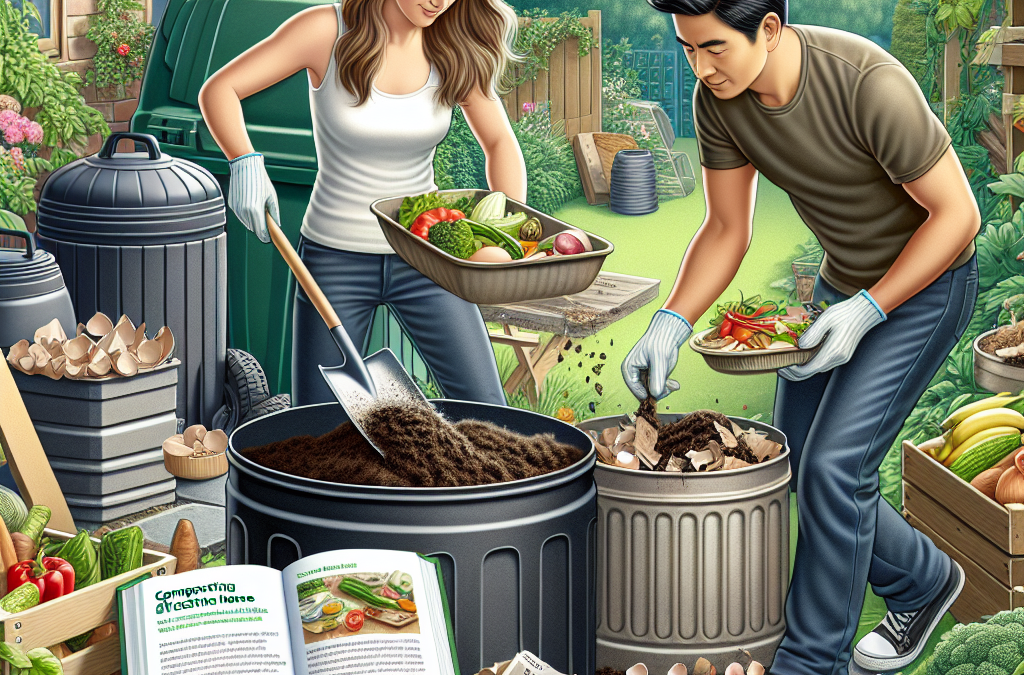Understanding the Basics of Composting
What is Composting?
Composting is essentially nature’s way of recycling, turning organic waste into something beneficial. It’s the process of taking leftover veggie scraps, grass clippings, and even leaves, and transforming them into a rich soil amendment. I remember when I first stumbled upon composting; it felt like discovering a secret superpower. Not only was I reducing waste, but I was also nurturing my garden at the same time!
At its core, composting relies on a simple recipe of green materials (like food scraps) and brown materials (like dried leaves). This blend creates a perfect environment for microorganisms and insects to break down the matter. Trust me, once you see the results, you’ll be hooked.
Understanding what composting is lays the groundwork for a successful endeavor. It’s not just a trendy thing to do; it’s a commitment to making your home more sustainable and eco-friendly. Plus, the whole process is surprisingly satisfying!
Choosing the Right Composting Method
Different Approaches to Composting
When I started composting at home, I was overwhelmed by the different methods available. There’s traditional bin composting, worm composting (a.k.a. vermicomposting), and even bokashi composting, which ferments waste. Each method has its perks, so it’s essential to find what suits your lifestyle best.
For instance, if I had a big backyard, the traditional compost bin would be a no-brainer. But if you’re in an apartment with limited space, the worm bin is compact and efficient—those little guys do wonders! Choose a method that fits your space, time, and willingness to experiment.
Thus, I’ve learned that the right composting method can make the experience much more enjoyable and successful. Take a little time to research the options, and you’ll find one that feels like a perfect match for you.
What to Compost: Choosing Your Materials Wisely
Greens vs. Browns
Now, let’s chat about materials. Not all scraps are created equal! The magical formula for great compost is a balanced mix of greens, which are wet and nitrogen-rich, and browns, which are dry and carbon-rich. It’s like the yin and yang of composting! My rule of thumb is about a 2:1 ratio of browns to greens.
Some excellent green materials include vegetable scraps, coffee grounds, and fresh grass clippings. On the flip side, dried leaves, straw, and shredded paper make for perfect brown materials. When I first started, I was surprised at how much kitchen waste I had—suddenly I was seeing my trash can in a new light!
By carefully selecting the right materials, I noticed a significant difference in how quickly my compost was breaking down. Plus, I felt good knowing I was diverting waste from the landfill. Keeping the balance between greens and browns is the secret sauce to rich compost!
Maintaining Your Compost Pile
Turning and Aerating
Okay, you’ve got your compost pile going—now what? Maintaining it is just as vital as the initial setup. The compost pile needs oxygen and moisture to function correctly. Every few weeks, I grab my pitchfork and turn the pile to aerate it. It’s like giving your compost a little workout!
Turning the pile not only enhances decomposition but also keeps odors at bay. I’ve found that if I neglect to aerate it, it can turn into a smelly mess. So trust me; keep that air flowing! Just give it a good turn every couple of weeks.
Moisture is essential, too. The compost should feel like a damp sponge. If it’s too dry, toss in some water or more greens. If it’s too wet, you might need to add more browns. Keeping an eye on these elements will help you maintain a healthy compost system.
Using Your Finished Compost
Ready to Enrich Your Garden
After several weeks or months, depending on your method and materials, you’ll reach the magical moment: your compost is done! It should have a rich, earthy smell and a crumbly texture. I still remember the first time I sifted through my finished compost; it felt like finding treasure in my backyard!
Now that you have this nutrient-dense material, it’s time to put it to use. I like to spread it in my garden beds, mix it with potting soil for indoor plants, or use it as a top dressing. The plants thrive, and it’s rewarding to see the fruits (and veggies) of my labor come to life.
Using your compost is the ultimate payoff of your hard work. It closes the loop on your gardening efforts and is one of the most satisfying experiences I’ve ever had in my gardening journey. Your plants will thank you, and so will the planet!
FAQs about Composting at Home
1. Can I compost meat and dairy?
While some advanced techniques allow for it, I generally recommend avoiding meat and dairy in home composts. They can attract pests and create odors. Stick to plant-based materials for a smoother process.
2. How long does it take to make compost?
The timeframe can vary from a few weeks to several months, depending on your method and how often you maintain it. Generally, the more you turn and aerate, the faster it breaks down!
3. Do I need a special bin for composting?
Nope! While bins can help, you can also create a simple pile in your backyard or use a worm bin indoors. Choose whatever fits your space and lifestyle best!
4. What should I do if my compost smells?
Bad smells usually indicate too much nitrogen or moisture. Try adding more brown materials and aerating the pile to help. Keeping that balance is key!
5. Can I compost paper products?
Yes, but it’s essential to use non-coated paper and shred it into smaller pieces. Brown paper bags, cardboard, and newspaper can all be composted in moderation.





